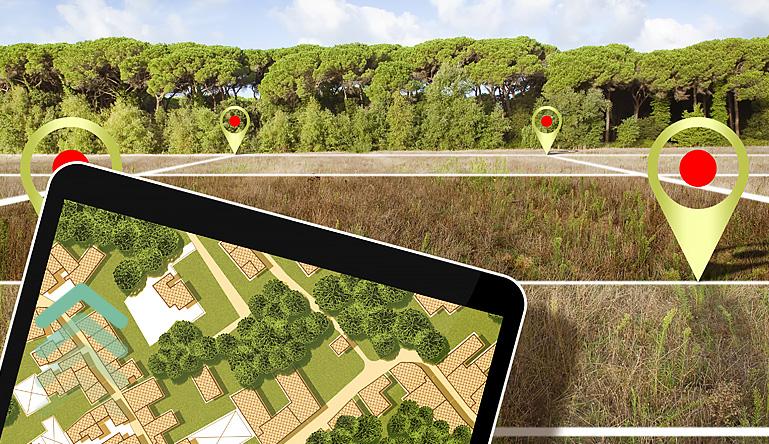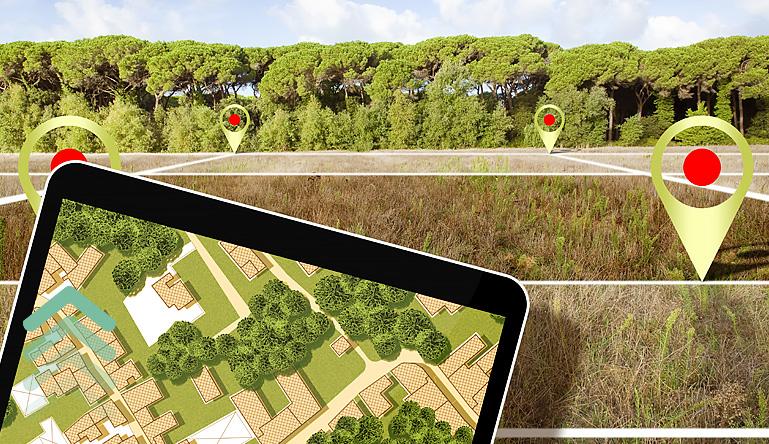The Good, the Great, and the Difficult to Use
 By David Salzer,
By David Salzer,
Director of Business Development,
Catalis Tax & CAMA
 Brent Jones,
Brent Jones,
Global Manager for
Cadastre/Land Records, Esri
In state government today, the importance of parcel data cannot be overstated. It is widely acknowledged that a little parcel data is good, and a lot is great. However, when confronted with a substantial amount of parcel data, things can quickly become challenging. The problem lies in the decentralized nature of this data, spread across numerous cities and counties throughout the state, lacking a unified standard for usability.
Aggregating parcel data at the state level offers an array of valuable applications, from emergency response and natural resource management to economic development, property tax oversight, and regional planning. By addressing the challenges of data fragmentation and standardization, we can unlock the full potential of parcel data and harness its power for informed decision-making and effective land management. This article seeks to clarify what parcel data is, what it is used for, and how to develop a sustainable system.
 What is a Parcel?
What is a Parcel?
Fundamentally, a parcel refers to a lot or plot of land. A GIS (geographic information system) delivers a graphical representation of parcel boundaries. Parcels in local government are not just the tax parcel boundaries on a map, but also all the information about the parcel. Information like the land and building characteristics that are maintained by assessors in a computer assisted mass appraisal (CAMA) system to determine a parcels taxable value. Conveyance documents like deeds, mortgages, liens, and easements that are managed by the recorder (or clerk) as an authoritative source for land ownership. Let’s not forget about zoning, planning, and use taxes – there is a lot of information associated with the humble parcel.
Why are Parcels Important?
Parcels are the fundamental element of land. They are also the fundamental element in linking information across local government. Usually developed by the assessor’s office, parcels are among the most publicly requested data in local government. Although initially developed for taxation, parcel maps are used for planning and guiding development decisions, environmental and natural resource management, infrastructure planning, and emergency management. Overall, parcels serve as a foundational tool for understanding spatial relationships, making informed decisions, and ensuring efficient land management.
What is Aggregated Parcel Data?
A map of a single parcel provides valuable information to individual landowners, real estate agents, or anyone interested in specific parcel details, such as ownership or taxation. On a larger scale, a parcel map of a city or county benefits the entire community by offering comprehensive insights. On a statewide level, a parcel map meets the diverse needs of numerous state agencies and serves as a valuable resource for data users in the private sector.
Aggregated parcel data is most useful when it contains the “big three” of land records data: geospatial parcels, assessment attribution, and conveyance history. The combination of these three key elements forms a comprehensive and valuable data resource that can be used across state government. That does not mean that there is not immense value in aggregations of any of these data sets individually, but when leveraged together they can work to streamline government efficiency and performance. Aggregated parcel data of any variety offers valuable insights for various purposes, such as urban planning, real estate analysis, property valuation, and efficient land management. It enables informed decision-making and facilitates a deeper understanding of spatial relationships and trends.
 When delivered through a modern technology platform, such as a geoportal, statewide parcel data becomes an invaluable resource for state government agencies, nonprofits, academia, and the private sector. This comprehensive dataset, accessible through advanced technology, serves as a valuable tool for informed decision-making, policy development, research, and analysis. It enables stakeholders from various sectors to leverage the data’s potential and derive meaningful insights to support their respective objectives and initiatives.
When delivered through a modern technology platform, such as a geoportal, statewide parcel data becomes an invaluable resource for state government agencies, nonprofits, academia, and the private sector. This comprehensive dataset, accessible through advanced technology, serves as a valuable tool for informed decision-making, policy development, research, and analysis. It enables stakeholders from various sectors to leverage the data’s potential and derive meaningful insights to support their respective objectives and initiatives.
Who Should Do the Work?
Local governments do the hard work of maintaining current parcel maps, assessment data, and conveyance history. They are responsible for the initial collection and management of this information. However, the task of connecting the dots and aggregating the data at the state level raises the question of responsibility. The specific drivers and approaches differ among states, but successful ones establish a sustainable system that automates the process on a regular schedule.
The responsibility for data aggregation can vary depending on the state. It may fall under the purview of state offices of GIS, departments of transportation, environmental agencies, or revenue departments. Each state determines the most appropriate entity to oversee this crucial task.
Several states, such as New Mexico, Vermont, South Dakota, and New Hampshire, have successfully aggregated parcel data with their departments of revenue or taxation leading the efforts. These departments take the lead because they have statutory obligations related to property tax oversight. To fulfill these requirements, they receive up-to-date parcel data, assessment, and sales data from all jurisdictions within the state.
The aggregated parcel data, combined with cloud technology provides a valuable resource for these states. It enables efficient property tax oversight, supports informed decision-making, and facilitates analysis and planning related to real estate. Additionally, this data is made available to various stakeholders, including state government agencies, nonprofits, academia, and the private sector, further enhancing its usability and impact.
Getting Started
Aggregating parcel data at the state level unlocks a wealth of insights and opportunities for state government, business, academia, nonprofits, and others. Understanding the fundamentals of parcel data, recognizing its significance in mapping, and embracing a standardized and systematic approach to aggregation is key to harnessing the power of this valuable resource. By doing so, we can foster smarter planning, enhance real estate practices, and achieve more sustainable land management for a better future.
Leverage cloud technology and solutions provided by Catalis and powered by Esri to streamline the data aggregation process. Cloud technology offers scalability, flexibility, and accessibility, making it an ideal platform for managing and integrating large volumes of data.
Visit catalisgov.com/solutions for a comprehensive list of our government/public sector solutions.












